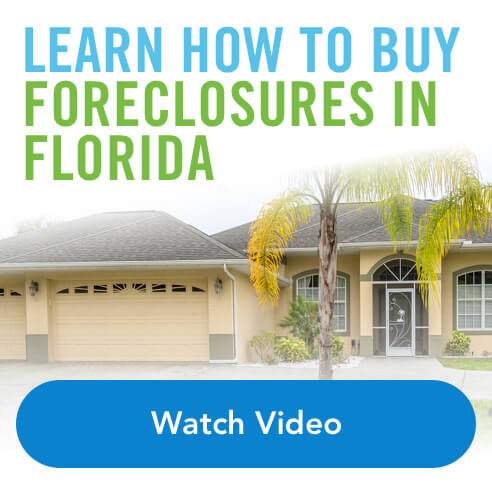
By Ethan Roberts
After several years of being out of favor, property flipping—buying and re-selling distressed homes in a short period of time to make a profit—is back in vogue among investors.
When done correctly, property flipping can generate a high profit margin for investors in a very short period of time. But too often, ignorance about the right or wrong kind of home to buy works against home flippers and drastically reduces their potential profits.
There are two important concepts to keep in mind when flipping a home. First, small and “cookie-cutter” homes are often easier to sell and more profitable. Second, when it comes to flipping, time is money—money that’s either going into or coming out of your pocket.
Newbie investors in particular often overlook these two principles at great expense, as they struggle to find a buyer while costs such as taxes, insurance, utilities, and maintenance pile up.
So today, I‘d like to identify five types of properties you should avoid when flipping a home. The reason to avoid these five is because they‘ll either be more difficult to sell or they’ll generate a smaller profit when you do sell them.
1. Avoid the “unique home.”
You know that A-frame home in the woods off that dirt road that was listed at a great price? Forget it! It’s a great price because nobody wants it. Even if you paint it, put in new carpeting, and install new appliances, you‘ll probably have a tough time finding a buyer. Also, appraisers may take value off a home if it’s on a dirt road.
Here’s a secret that most people don’t know: boring, cookie cutter homes re-sell faster than unique homes. Unique homes may look great in a magazine, or make for fun cocktail party conversation, but most people really don’t want to live in them.
2. The large home in the neighborhood of smaller homes.
The largest home in the neighborhood will command the smallest price per square foot. It’s better to buy a smaller home and let the neighborhood values “lift up” the value of your home, than the other way around.
In addition, rehabbing a larger home is more expensive for the investor. You’ll need to buy more paint, more flooring, more bathroom sinks, fixtures, fans, and on and on. It’s also far more time consuming to remodel. So buy a smaller home, and get in there, get it done, and sell it fast. That’s how you make the most money on a flip.
3. The home built before 1978.
With a pre-1978 home, not only do you have to deal with lead paint issues and the Environmental Protection Agency’s 2008 Renovation, Repair and Painting (RRP) Rule, but you’re looking at stylistic problems as well. Older-style homes are sometimes not as popular with buyers because they have smaller bedrooms, closets, and bathrooms than newer homes. In addition, they generally don’t have the open or split floor plans that are more popular among buyers today.
So when you buy a home built before 1978, you’re starting off with a few disadvantages that you don’t have with home that was built after. As investors, we want to minimize risk, so let’s put the odds in our favor, and not against ourselves. If all the homes in your city are older than 1978, you may want to consider investing in a different area.
4. The home on the busy main road.
Would you let your children play in the street in front of the home you’re considering for a flip? If not, then it’s likely that other parents won’t either, and your home will lose a large chunk of the potential buyers out there. Not only are main roads more dangerous, but they’re also noisier and more congested with traffic.
Even when they do sell, these homes garner far less than those that are a few blocks off the main road. So avoid these homes, even if they’re discounted, as it will take you longer to find ready and willing buyers.
5. The home on the bad block.
A block can be “bad” for any number of reasons. It could mean that all the surrounding homes are run down and not likely to look better any time soon. It could mean there’s been criminal activity reported on the street. Several real estate websites give buyers access to local police reports, and if your street is in a high-crime area, word gets around fast.
Make sure the block is not a local hangout for unsavory characters, or even for animals. I have seen streets where wild dogs run loose through the neighborhood.
These and other negatives will turn off potential buyers, and no matter how cheaply you’re able to buy that home, you’ll more than likely have difficulty re-selling it. So skip the bad block, no matter how cheap the home appears to be, and instead look to buy the worst home on a good street. That way, when you fix up your home, it will be as nice or better than the good homes that surround it.
Basically, the secret to flipping a home successfully is to give yourself all of the advantages and avoid the risks. By following these tips on which homes to avoid, you’ll take a big step in the right direction.

Ethan Roberts is a real estate writer, editor and investor. He’s a frequent contributor to InvestorPlace, and his work has been featured on MSN Money and Reuters. He’s also written for Seeking Alpha, Investopedia, The Fiscal Times, ForSaleByOwner and Smarty Cents, and was one of five contributing editors to The Tycoon Report. He’s been investing in real estate since 1995 and has been a Realtor since 1998. He also teaches classes on investing in residential real estate.

